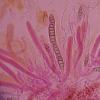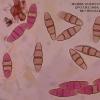
01-02-2013 13:27
Garcia SusanaHolaEste ascomiceto lo he encontrado tambien sobre

31-01-2013 16:44
Garcia SusanaTambien crecia sobre Rubus. En este caso sobre la

31-01-2013 20:33
Salvador TelloHola.Este ascomiceto crece en conteza de Arbutus u

31-01-2013 12:43
Nina FilippovaGood day everyone, have collected some data to Go

31-01-2013 16:10
Garcia SusanaEl aspecto macro es el de ascomas negros muy peque

29-01-2013 12:15
Stefan BlaserHello everybody I do have one more "burden of the

30-01-2013 01:10
 Miguel Ángel Ribes
Miguel Ángel Ribes
Good night againThis small (4-6 mm diam.) orange t



